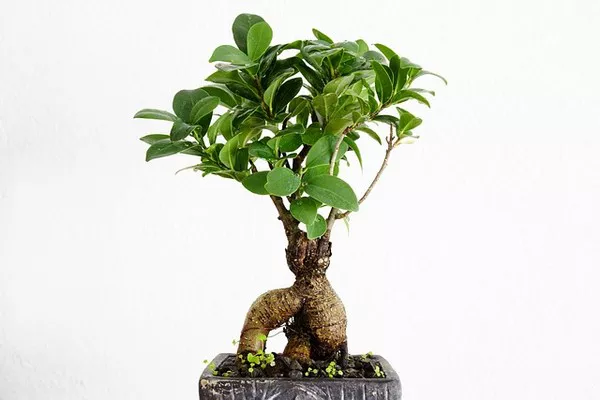Bonsai, the ancient Japanese art of cultivating miniature trees, has captivated the hearts and minds of enthusiasts worldwide for centuries. While many bonsai trees are grown from cuttings or nursery stock, starting from seeds offers a unique and rewarding experience. Planting bonsai seeds allows for a deeper connection with the growth process, enabling enthusiasts to witness the tree’s journey from germination to maturity. However, it requires patience, precision, and a thorough understanding of the techniques involved. In this comprehensive guide, we’ll explore the step-by-step process of planting bonsai seeds, from selecting the right seeds to caring for the saplings as they develop into beautiful miniature trees.
Choosing the Right Seeds
The journey to growing a bonsai tree from seeds begins with selecting the right seeds. While it’s possible to grow bonsai trees from seeds of various species, some species are more suitable for bonsai cultivation than others. Here are some factors to consider when choosing bonsai seeds:
1. Species Suitability: Certain tree species are better suited for bonsai cultivation due to their growth characteristics, such as small leaves, fine branching, and tolerance for root pruning. Common bonsai species include Japanese maple (Acer palmatum), Chinese elm (Ulmus parvifolia), and Juniper (Juniperus spp.).
2. Seed Quality: Opt for fresh, high-quality seeds from reputable suppliers or sources. Fresh seeds have a higher germination rate, increasing the likelihood of successful bonsai cultivation.
3. Climate Compatibility: Consider the climate conditions in your region and choose tree species that are suitable for your climate. Some bonsai species may require specific temperature or humidity conditions for optimal growth.
4. Personal Preference: Select tree species that align with your aesthetic preferences and bonsai vision. Whether you prefer deciduous trees with vibrant autumn foliage or evergreens with graceful, year-round beauty, choose seeds that resonate with your artistic sensibilities.
Once you’ve chosen the right seeds, it’s time to prepare for the planting process.
Preparing for Planting
Before planting bonsai seeds, gather the necessary materials and create an optimal environment for germination. Here’s what you’ll need:
1. Bonsai Soil Mix: Prepare a well-draining bonsai soil mix suitable for seed germination. A typical mix may include components such as akadama, pumice, and lava rock in varying proportions, depending on the tree species’ requirements.
2. Containers: Select shallow bonsai pots or seed trays with adequate drainage holes to promote healthy root development. Ensure the containers are clean and sterilized to prevent the risk of soil-borne diseases.
3. Seed Stratification: Some bonsai species require stratification, a process of exposing seeds to cold and moist conditions to break dormancy. Research the specific stratification requirements for your chosen tree species and prepare accordingly.
4. Watering Equipment: Have a watering can or spray bottle on hand to provide moisture without disturbing the delicate seeds and seedlings.
5. Light Source: Position the planting containers in a location with indirect sunlight or provide supplemental grow lights to support seed germination and early growth.
Once you’ve gathered the necessary materials, it’s time to proceed with the planting process.
Planting Bonsai Seeds: Step-by-Step Guide
Follow these step-by-step instructions to plant bonsai seeds successfully:
1. Preparation of Planting Containers:
Fill the bonsai pots or seed trays with the prepared soil mix, leaving a small gap between the soil surface and the rim of the container.
Gently tap the containers on a flat surface to settle the soil and remove any air pockets.
2. Sowing Seeds:
Place the bonsai seeds on the soil surface, spacing them evenly to allow room for growth.
For larger seeds, such as those of the Japanese maple, make a small indentation in the soil with your fingertip and place the seed inside before covering it lightly with soil.
For smaller seeds, sprinkle them evenly across the soil surface and press them lightly into the soil to ensure good seed-to-soil contact.
3. Watering and Moisture Management:
Use a fine mist or watering can to moisten the soil thoroughly without saturating it. Avoid flooding the containers, as excessive moisture can lead to fungal diseases and rot.
Cover the planting containers with a clear plastic lid or plastic wrap to create a mini-greenhouse effect, retaining moisture and warmth for optimal germination.
4. Temperature and Light Requirements:
Place the planted containers in a warm, bright location with indirect sunlight or provide supplemental grow lights to promote seed germination.
Monitor the temperature and maintain a consistent, moderate temperature range conducive to germination, typically between 65°F to 75°F (18°C to 24°C).
5. Patience and Monitoring:
Germination times vary depending on the tree species and environmental conditions. Be patient and monitor the containers regularly for signs of germination, such as seedling emergence and cotyledon unfurling.
Keep the soil consistently moist but not waterlogged during the germination period to support seedling growth.
6. Transplanting and Seedling Care:
Once the seedlings have developed their first set of true leaves and exhibit robust growth, carefully transplant them into individual bonsai pots filled with well-draining bonsai soil mix.
Handle the seedlings with care to avoid damaging the delicate roots and stems.
Provide appropriate care for the transplanted seedlings, including regular watering, balanced fertilization, and proper light exposure to support healthy growth.
By following these steps and providing attentive care, you can successfully plant bonsai seeds and embark on a rewarding journey of nurturing miniature trees from their earliest stages of life.
Conclusion
Planting bonsai seeds offers enthusiasts a unique opportunity to connect with the art of bonsai cultivation from its very inception. By carefully selecting high-quality seeds, preparing the planting containers, and providing optimal growing conditions, enthusiasts can witness the magical transformation of tiny seeds into exquisite miniature trees. While the process requires patience and dedication, the rewards of cultivating bonsai from seeds are immeasurable, offering a deeply fulfilling experience and a lifelong connection to the art of bonsai. So, roll up your sleeves, gather your materials, and embark on the journey of planting bonsai seeds—it’s a journey filled with wonder, growth, and endless possibilities.


